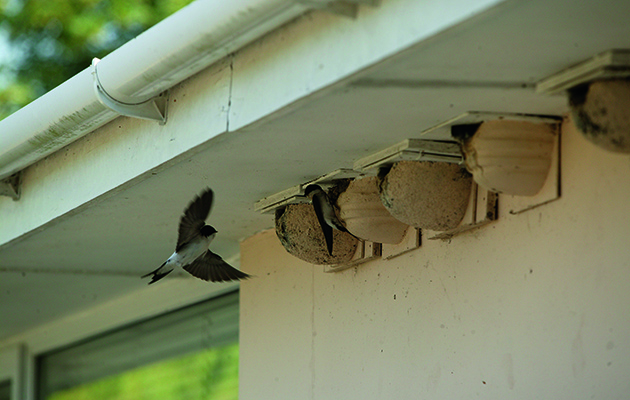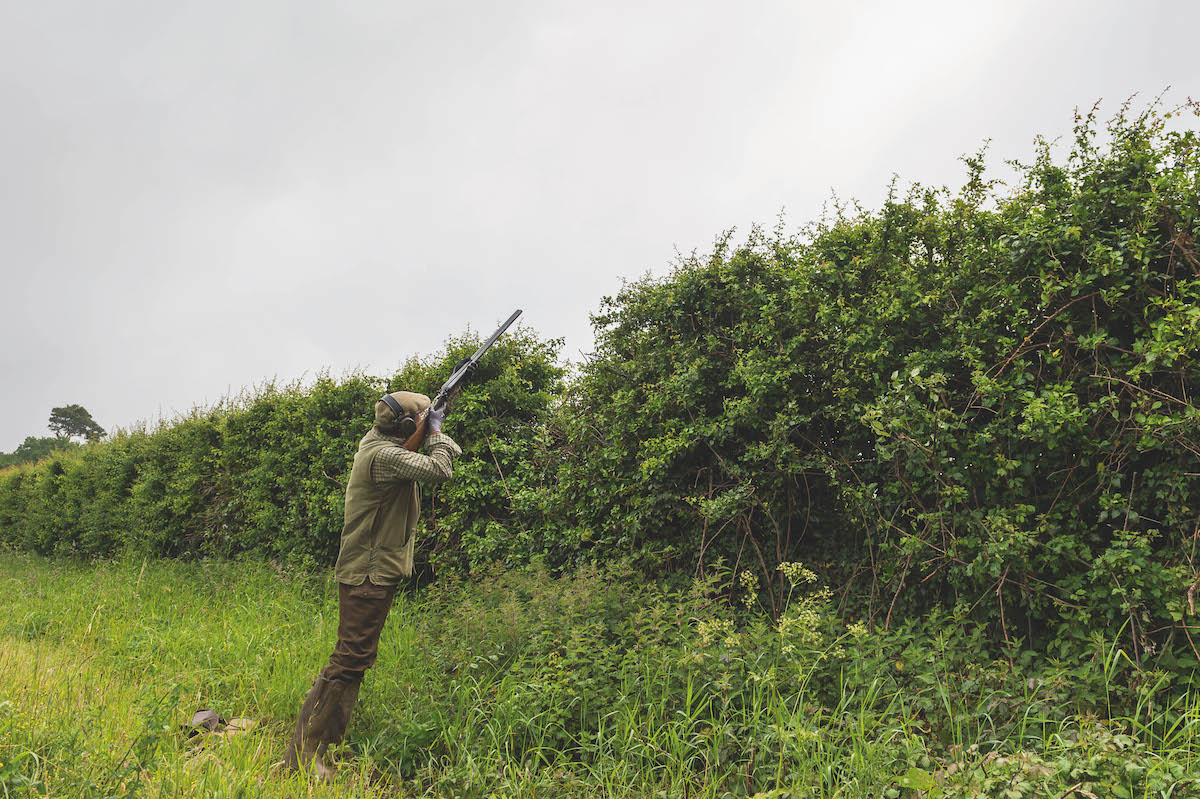Why are the house martins moving out?
House martins are quietly disappearing from many parts of England, but numbers are growing in Scotland. Graham Appleton wonders why

House martins will use artificial nests, particularly if it is hard for them to find the mud that they need to build
When we moved into our current Norfolk home there were house martins nesting under the eaves, but there aren’t any now. Some people dislike the mess made by these delightful little birds, especially if the nest is attached to the eaves directly above a window, but we miss our house martins. There’s something relaxing about sitting on the patio and watching birds swooping in and out of their nests or lying in bed and listening to them chattering to each other in the early mornings.
The house martin is quietly disappearing from many parts of England. The British Trust for Ornithology (BTO) / Joint Nature Conservation Committee / RSPB Breeding Bird Survey suggests a 21 per cent decline since 1995, with little change in Wales and increases in Scotland and Northern Ireland. So this is another of the many species doing badly in the south-east and much better in the north- west. Norfolk is one of the counties that has seen the biggest changes in abundance between 1988-91 and 2008-11, so I guess we should not take the loss from our house as a personal affront.
North-south divide
Having evolved as a cliff-dwelling species, house martins are now typically associated with villages. Last year I was asked to count nests in the local village of Honingham, as part of a specific national BTO survey. This was a randomly assigned village in which I found one nest. As I wondered about, looking up at the eaves of houses, I spoke to several people who bemoaned the recent loss of these special birds. One person thought that the drop in numbers coincided with the cessation of dairy farming in the village and he may well have a point — without the muddy patches created by cattle, pairs of birds may simply not be able to find 1,000 mud pellets that they need to build a nest.
Even if an old nest survives the winter, there will still be repair work to do each spring, especially around the entrance hole, enlarged by growing youngsters in the previous summer. Interestingly, the only pair of house martins in Honingham were using an artificial nest provided for them by a kind home-owner.
It is unlikely that nest-building opportunities completely explain the change in distribution for England’s house martins. Food availability during the breeding season is probably a more powerful — and large-scale — driver of declines. House martins catch flies and aphids in the summer and the north/south differences in their fortunes may well have a lot to do with the loss of livestock from English farming, more efficient control of aphids and a general drying of the environment. House martins can have two or three broods during a summer and increases in northern Britain may reflect an earlier start to summer and therefore a longer potential breeding season than used to be possible.

House martins typically build their nests in the eaves of houses and can have two or three broods
Conservation pressures
As with many of our summer migrants, it is hard to disentangle the mix of conservation pressures that might be affecting numbers. There are definite differences in trends in the UK so some
of the issue must be here, but it would not be surprising if the intensified use of land along the species’ migration route could also be playing a part, whether in Spain or west Africa. It has been shown that spring return rates are lower in dry African winters, which suggests that food availability in Africa is crucial to these tiny 20g migrants.
We know a lot less about the timing and routes taken by migrating house martins than we do about swallows, though both species winter in Africa. Swallows often follow cattle, a behaviour that brings them into contact with people, and they gather together in night-time roosts, allowing bird ringers in South Africa to catch them and read the numbers on BTO rings.
House martins are more enigmatic; there has only been one recovery of a British-ringed individual from within the predicted winter range. This was found in February 1984 in southern Nigeria, by which time it may already have been on its way back to the UK. We think our birds might travel as far south as the forests of countries such as the Congo, feeding over the tops of the trees and perhaps even spending the night in the air. We will not know until researchers can use lighter tracking devices than the ones currently used on cuckoos, for instance. If these can measure altitude or temperature, as well as location, perhaps we will discover whether the real reason that house martins have feathered feet is because they roost on the wing, in the cold air high above Africa’s forests and plains, in the same way that swifts do.
While we wait for technological innovation to provide us with insights into the lives of our house martins in Africa, the focus is on understanding what is happening to the species here. The 2015 BTO survey will provide a baseline of information about breeding densities nationally and this year people are being encouraged to report on the breeding behaviour of their local birds. It is almost impossible to look into a house martin’s nest, but the presence of discarded eggshells gives proof of successful hatching and a splattering of droppings shows that youngsters have become old enough to poop over the edge of the nest. With the help of local volunteers, BTO scientists hope to measure breeding success and the number of broods raised per year. Any regional differences may help to explain why numbers are going up in Scotland and down in southern England.
House martins under attack
Though insect numbers and mud availability are probably the biggest problems for house martins, three other bird species might be having local effects:
Some great spotted woodpeckers have learned to drill their way into house martin nests to eat chicks.
Hobbies are nimble falcons, feeding on dragonflies, swallows and martins, all of which they catch in flight.
House sparrows often take over house martin nests in early spring, leaving house martins homeless.








